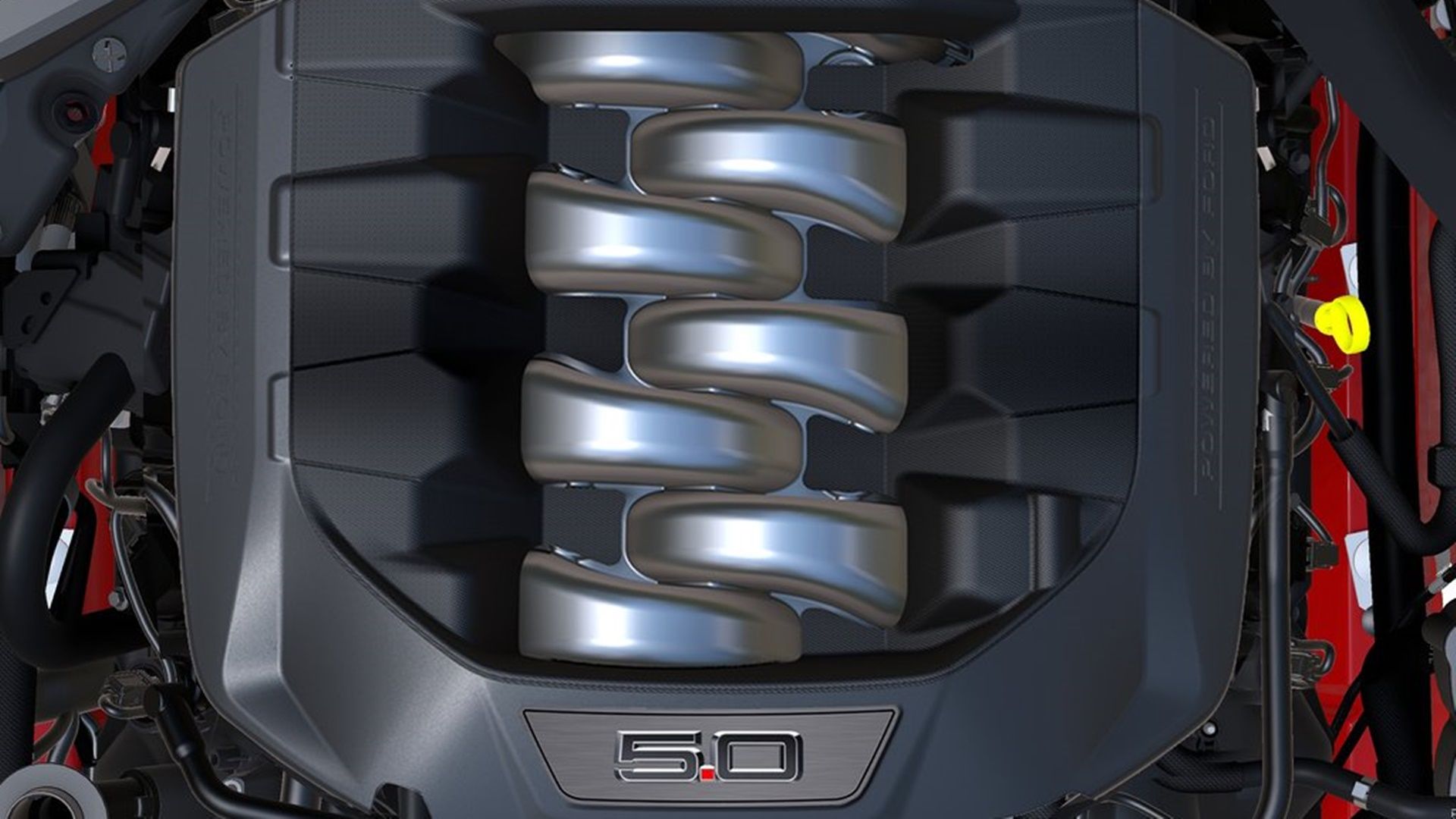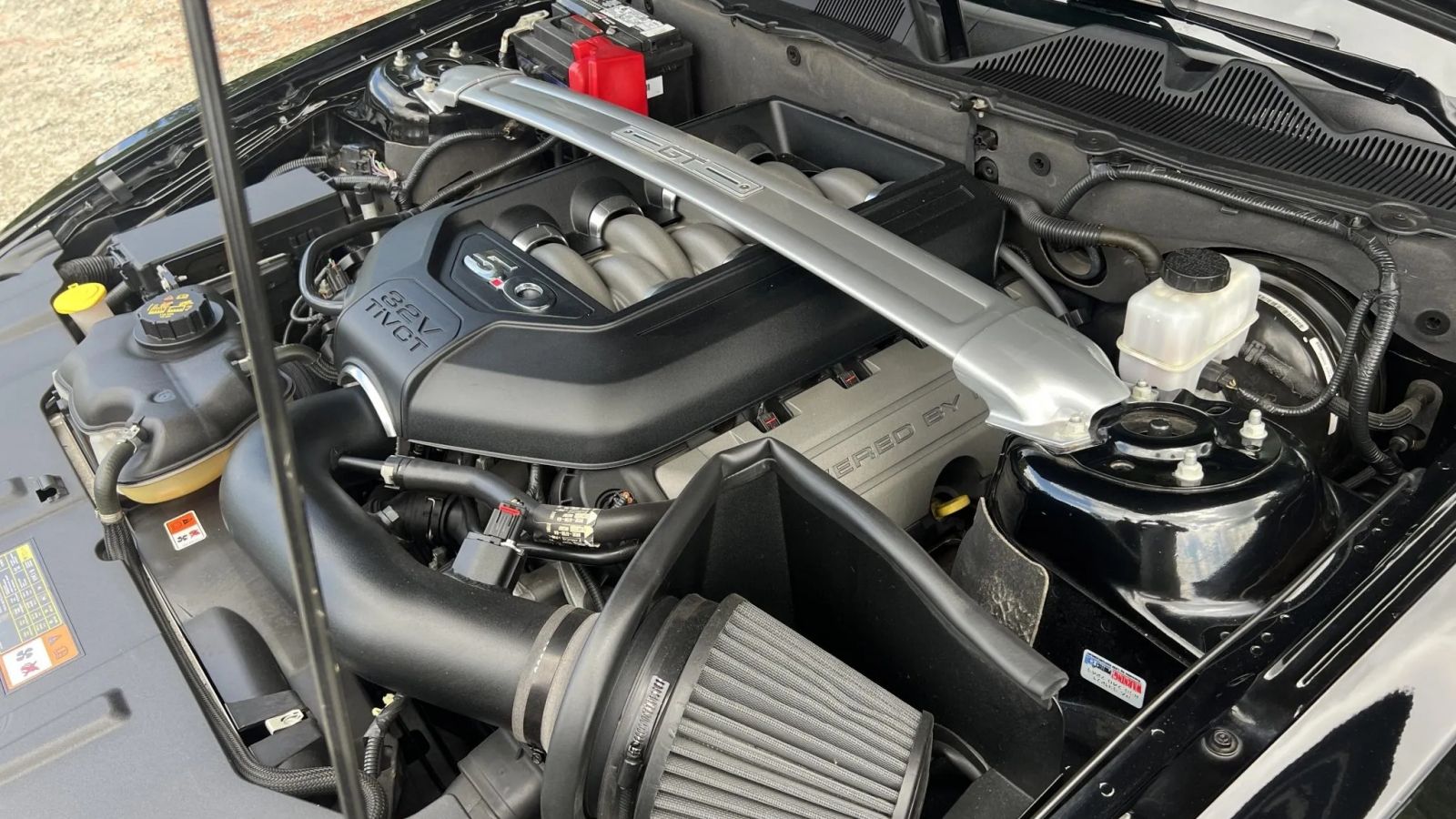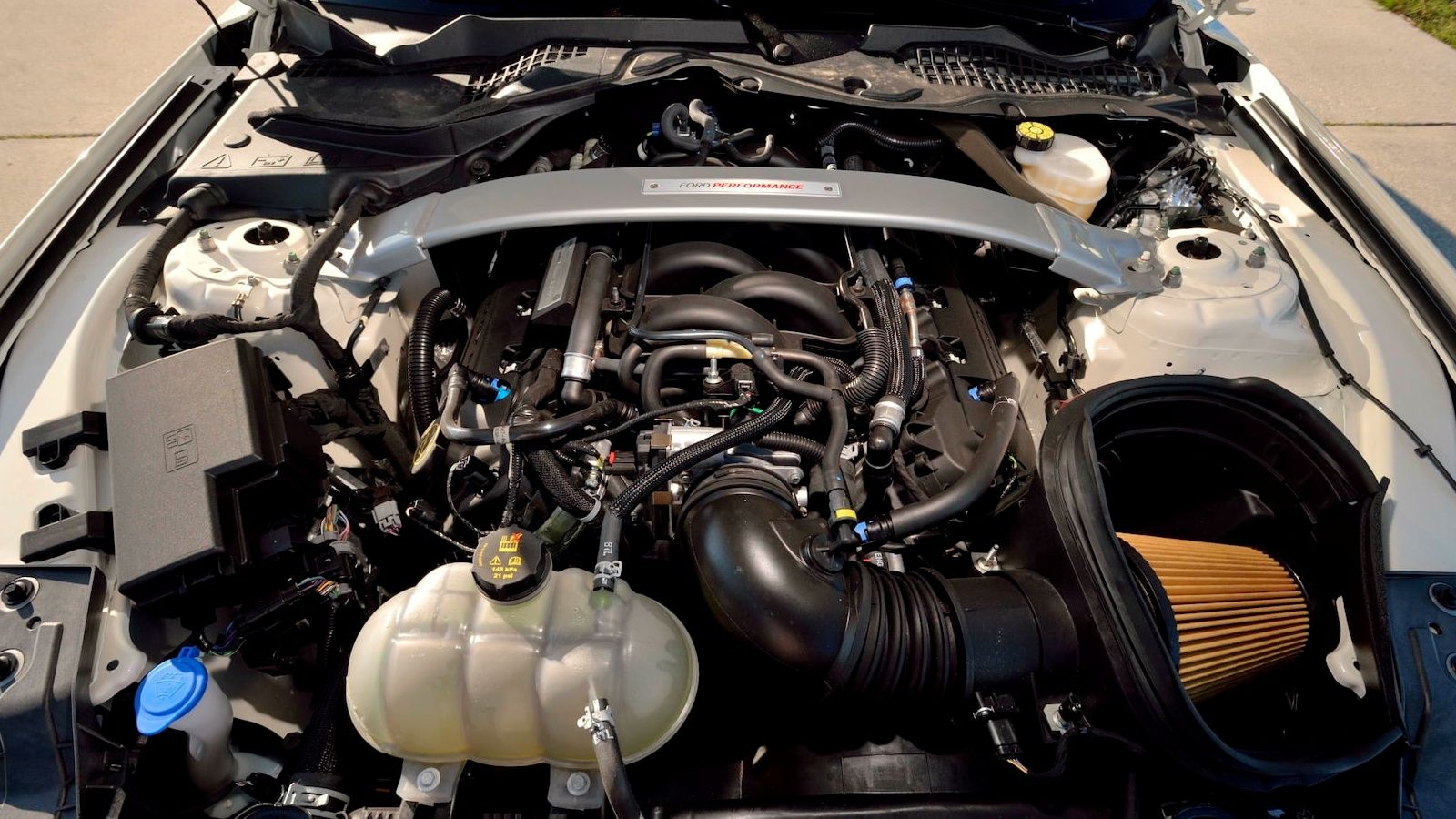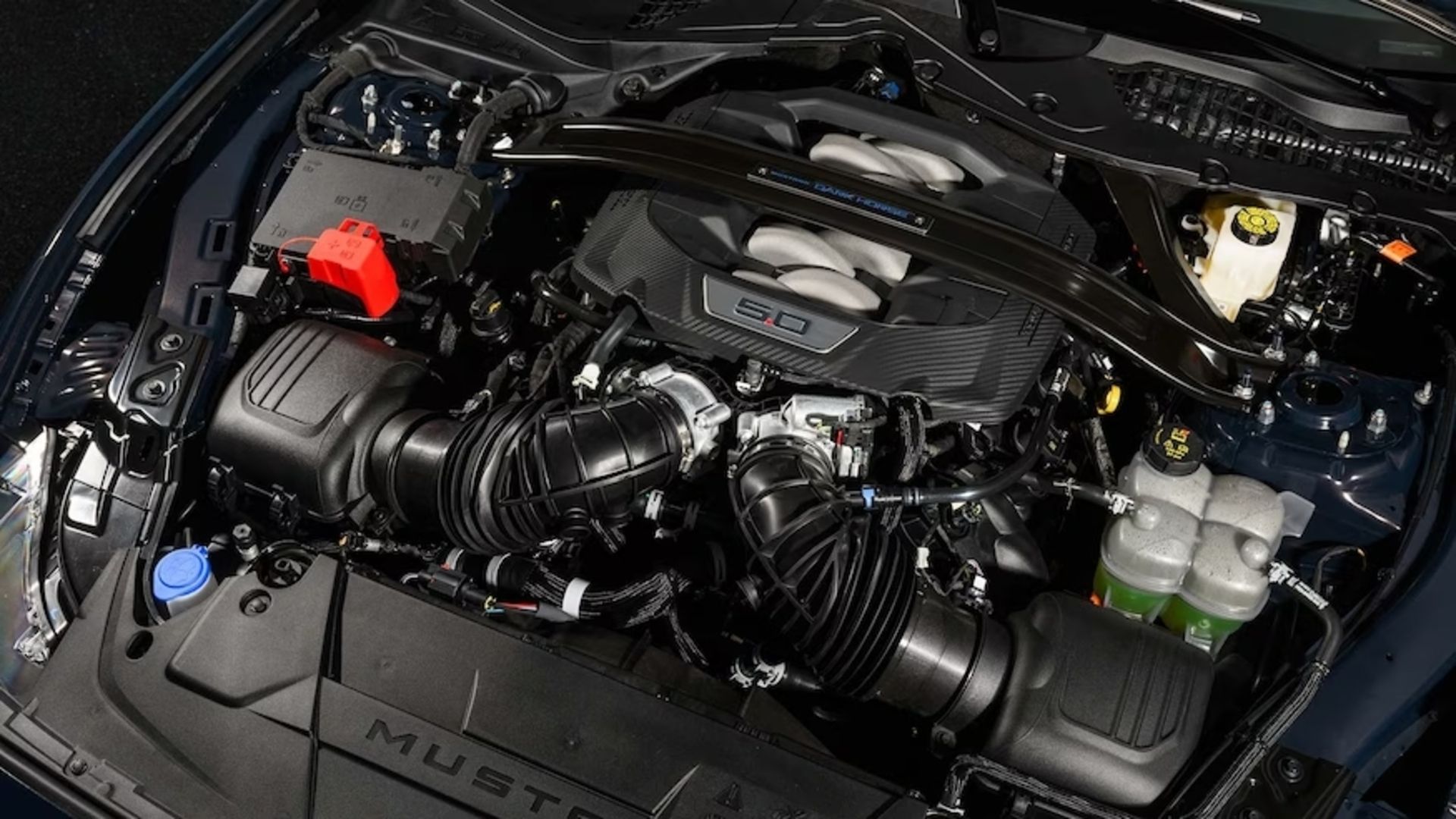The Ford Mustang has always been the definitive Pony car even after the Camaro’s introduction in 1967. At the time of writing this, the Ford Mustang is in its seventh generation, not cunting the all-electric Mustang Mach-E. Aside from the smog-era models, each generation Mustang became measurably better. While the Mustang’s chassis has evolved over the years, it is the engine that makes a Mustang special. While the rest of the Muscle cars still utilize pushrod V-8 engines, Ford’s Mustang is propelled by an overhead-cam engine.
Since 2011, the mighty Coyote V-8 replaced the dependable 4.6, giving the Pony car even more performance while still being reliable. The Ford Coyote V-8 is, currently, in tis fourth generation and like its predecessors, it is capable of dishing out a lot more than the standard numbers. With that said, we ranked, from worst to best, all Coyote engines and their derivatives in terms of tuning potential, and what, generally, agreed to be the power limit, measured in crankshaft horsepower.
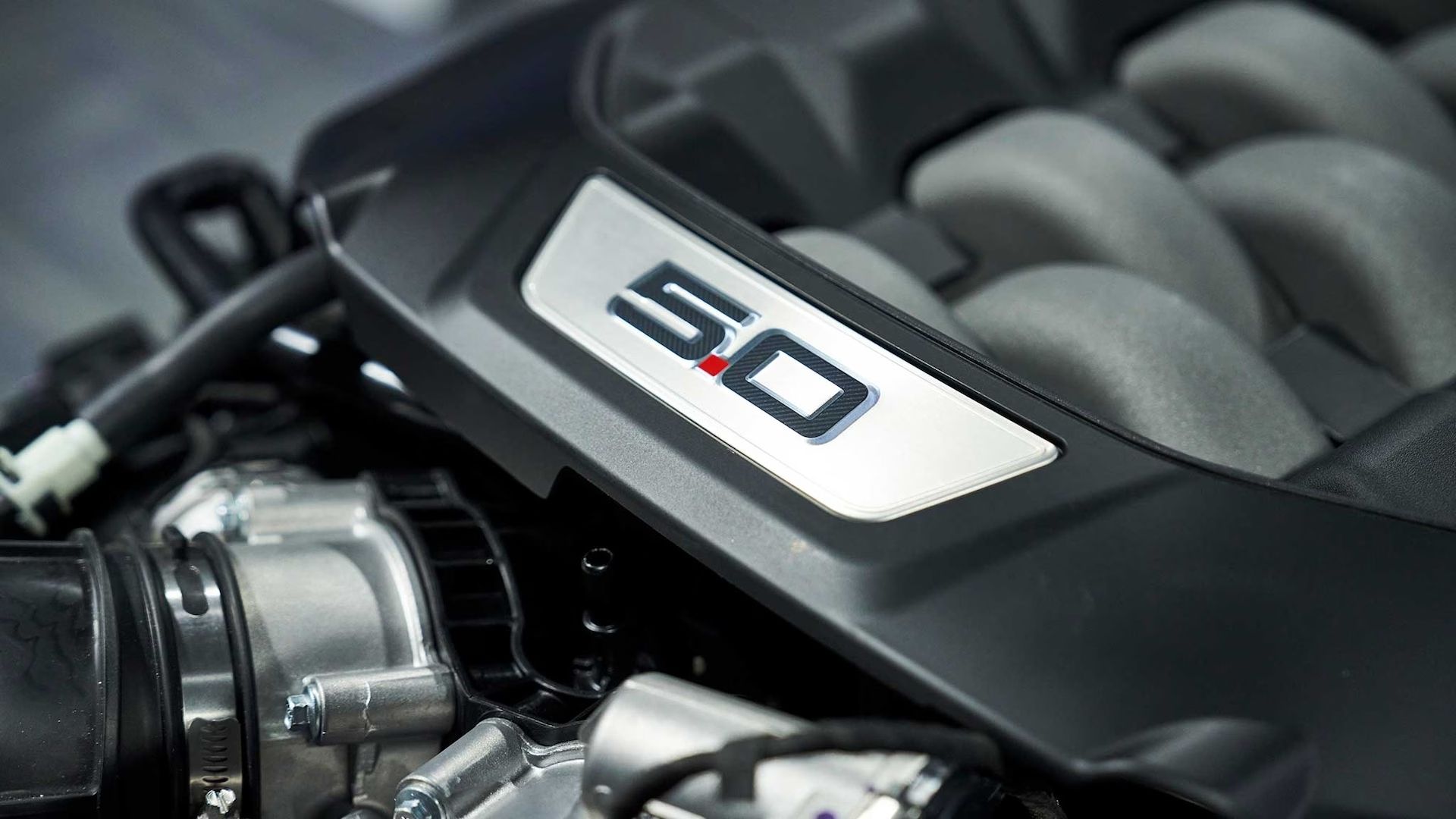
Dyno Test Reveals How Much Power The Gen-4 Coyote Engine Really Makes
Unleashing a new era of power, here’s how the 5.0-liter Coyote Gen 4 engine from Ford stands at the forefront of automotive innovation.
We gathered extensive data on the Ford Coyote V-8 engine and its derivatives from various, specialized websites like American Muscle, Late Model Restoration, Vehicle History, Lethal Performance, CJ Pony Parts, and official manufacturer websites. We also took a look at various builds by various tuners, which have hands-on experience with the Coyote platform, in order to get an idea of the horsepower cap of each Coyote/ Coyote-based engine. The list has been ordered based on tuning potential.
6 Ford Coyote Gen-1
Power Limit: 750 Horsepower
The first generation of the Ford Coyote engine came in 2011 as a successor to the Ford Modular V-8 engine. While the Coyote is considered an evolution of the Modular mill, it’s measurably better in every aspect, including fuel economy. The first Coyote V-8 came in two different variations, depending on the application.
Techncial Highlights
- Better fuel economy despite being larger and more powerful than the 4.6 Modular
- A much higher horsepower cap compared to the 4.6 Modular
- The first Ford V-8 with variable cam timing
The more widely spread-out unit is your standard Coyote, featured in the Mustang GT, which made its debut in the phase-three S197 Mustang. The second version is geared for fewer horsepower and more low-end torque, better suited for pickup trucks like the Ford F-150. The two variants are virtually identical, except for the intake and exhaust systems.
Ford Coyote Generation One Specifications
|
Manufacturer |
Ford |
|
Production Years |
2011-2014 |
|
Configuration |
DOHC, 90-degree, V-8 |
|
Displacement |
4,951 cc/ 302 cui |
|
Power |
360-420 hp |
|
Torque |
380-390 lb-ft |
|
Fuel |
Gasoline |
|
Noteworthy Applications |
Ford Mustang GT, Ford F-150 |
(Source: Ford)
One of the biggest novelties of the Coyote engine is that it comes with twin-independent variable cam timing (Ti-VCT), which improves fuel economy and low-end torque. All Coyote engines feature forged crankshaft and cast pistons from the factory.
The general consensus is that early Coyote engines can take 750 crankshaft horsepower comfortably, which is also where most performance kits like the Mustang Roush Stage 3 top out. Even more impressive is the fact, that basic bold-ons can make these early, Coyote V-8s make over 400 wheel-horsepower, as proven by LMR‘s dyno pulls.
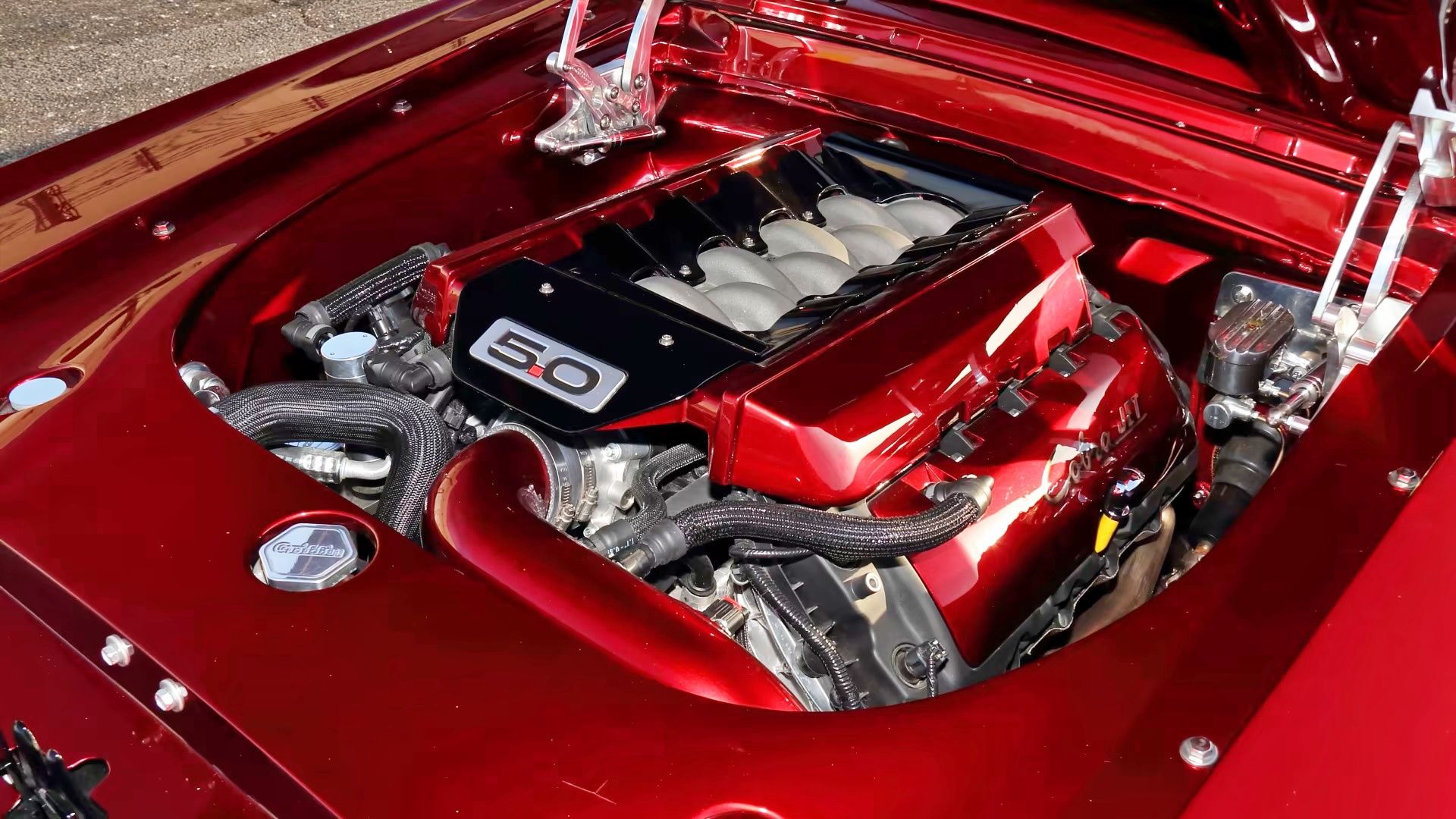
Here’s What Makes The Ford Coyote Mustang Engine So Versatile
Renowned for its mix of performance and reliability, here’s what makes the potent Coyote engine one of Ford’s most versatile engines
5 Ford Coyote Gen-2
Power Limit: 750–800 Horsepower
The second generation of the 5.0 Coyote V-8 came for the 2015 model year, with the introduction of the S550-generation Ford Mustang. This iteration of the Coyote brought subtle changes like beefier connecting rods and revised pistons with deeper valve relief.
Techncial Highlights
- More power and torque compared to the Generation 1 Coyote
- Stronger connecting rods
- Revised cylinder heads
The compression ratio remained 11.0:1, as did the 7,000 RPM redline. Peak torque and horsepower values remained at 4,250 and 6,500 RPM respectively. Despite the Ford Mustang GT engine being down on displacement compared to the Camaro and Challenger V-8s, the dyno pulls suggest, the generation-two Coyote can more than keep up with the archaic pushrods.
Ford Coyote Gen-2 Specifications
|
Manufacturer |
Ford |
|
Production Years |
2014-2017 |
|
Configuration |
DOHC, 90-degree, V-8 |
|
Displacement |
4,951 cc/ 302 cui |
|
Power |
385-435 hp |
|
Torque |
390-400 lb-ft |
|
Fuel |
Gasoline |
|
Noteworthy Applications |
Ford Mustang GT |
(Source: Ford)
Ford also revised the intake manifold and variable cam timing. Ultimately, the second generation Coyote saw a hefty increase in power compared to the first generation, without major revisions to the architecture.
Like its predecessor, the second-generation Coyote can also be found in the Ford F-150, geared for less top-end power and more mid-range oomph. With the S550 reintroducing the rear independent suspension, the Coyote V-8’s power could be better put to use, prompting tuners like Roush to churn out track monsters, based on the S550 ‘Stang.
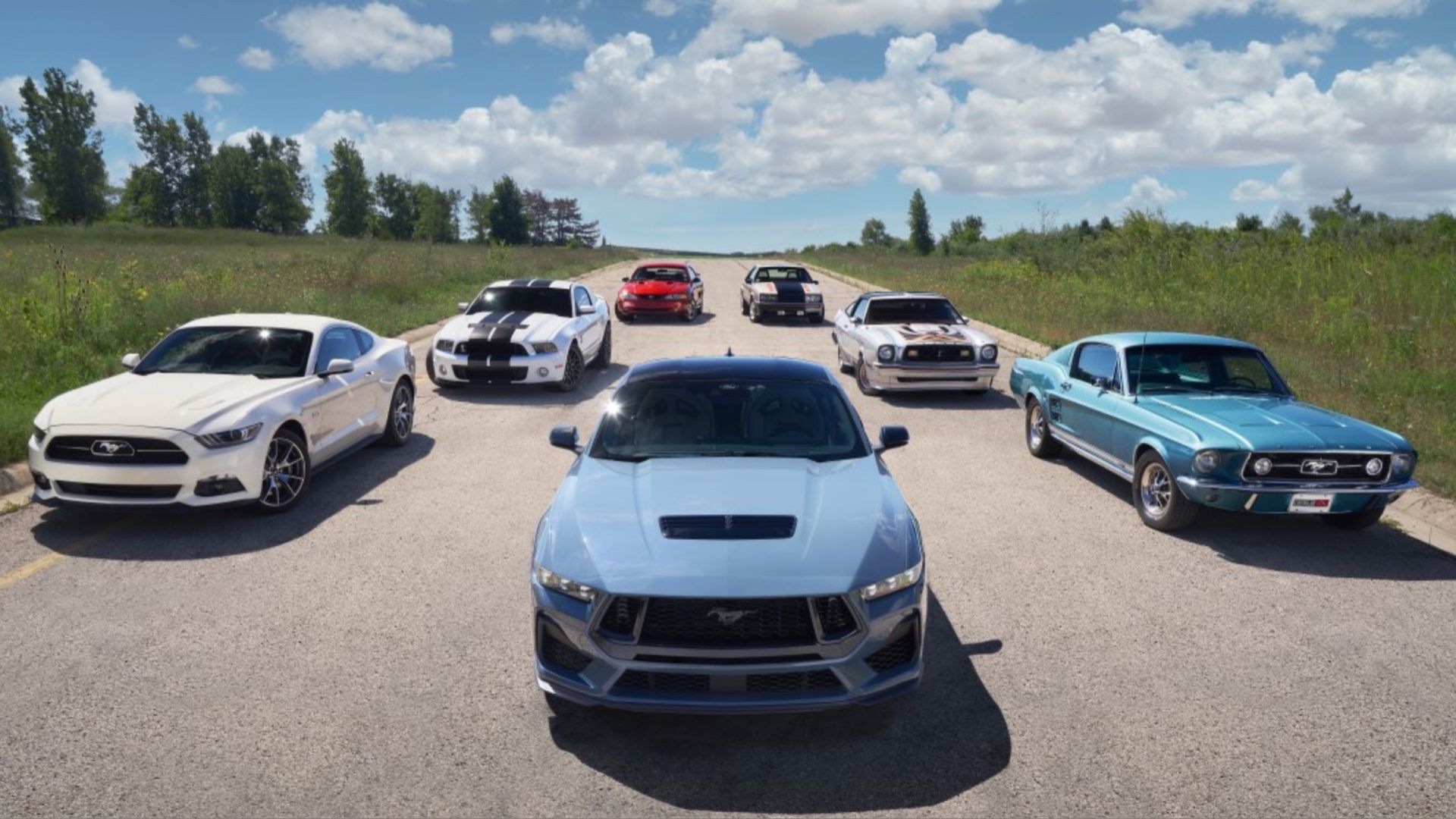
Best Generation For A Ford Mustang Project Car
Due to its affordability, versatility, and widespread availability, here’s why the Fox Body Mustang is an excellent choice for a project car
4 Ford VooDoo
Power Limit: 800-850 Horsepower
Just as the original Ford Mustang Shelby GT350 was the most hardcore ‘Stang of its day, the same is true for its spiritual successor, based on the S550 Mustang. The 2017 Mustang GT350 and its (even more) hardcore variant, the GT350 R, feature the Ford-first V-8 with a flat-plane crankshaft.
Techncial Highlights
- Ford’s first V-8 with a flat-plane crankshaft
- 8,250 RPM redline
- Over 100 horsepower per liter
Codenamed VooDoo, this high-revving V-8 is still based on the generation three Coyote. Although the VooDoo’s high-rev nature sacrifices a bit of low-end torque, dyno pulls show a hefty bump in top-end power, which is even more impressive after the addition of E85.
Ford VooDoo Specifications
|
Manufacturer |
Ford |
|
Production Years |
2017-2020 |
|
Configuration |
DOHC, 90-degree, V-8 |
|
Displacement |
5,162 cc/ 315 cui |
|
Power |
526 hp |
|
Torque |
429 lb-ft |
|
Fuel |
Gasoline |
|
Noteworthy Applications |
Ford Mustang Shelby GT350, GT350 R |
(Source: Ford)
Thanks to the new crankshaft and unequal-length headers, the new GT350 features an 8,250 RPM redline and produces 102 horsepower per liter, while scoring a very unique soundtrack. Like anything else from the Coyote family, these engines are capable of handling big power reliably. However, despite its high-rev characteristics, experts say a stock VooDoo can take 800 to 850 horsepower before you need to modify the internals.
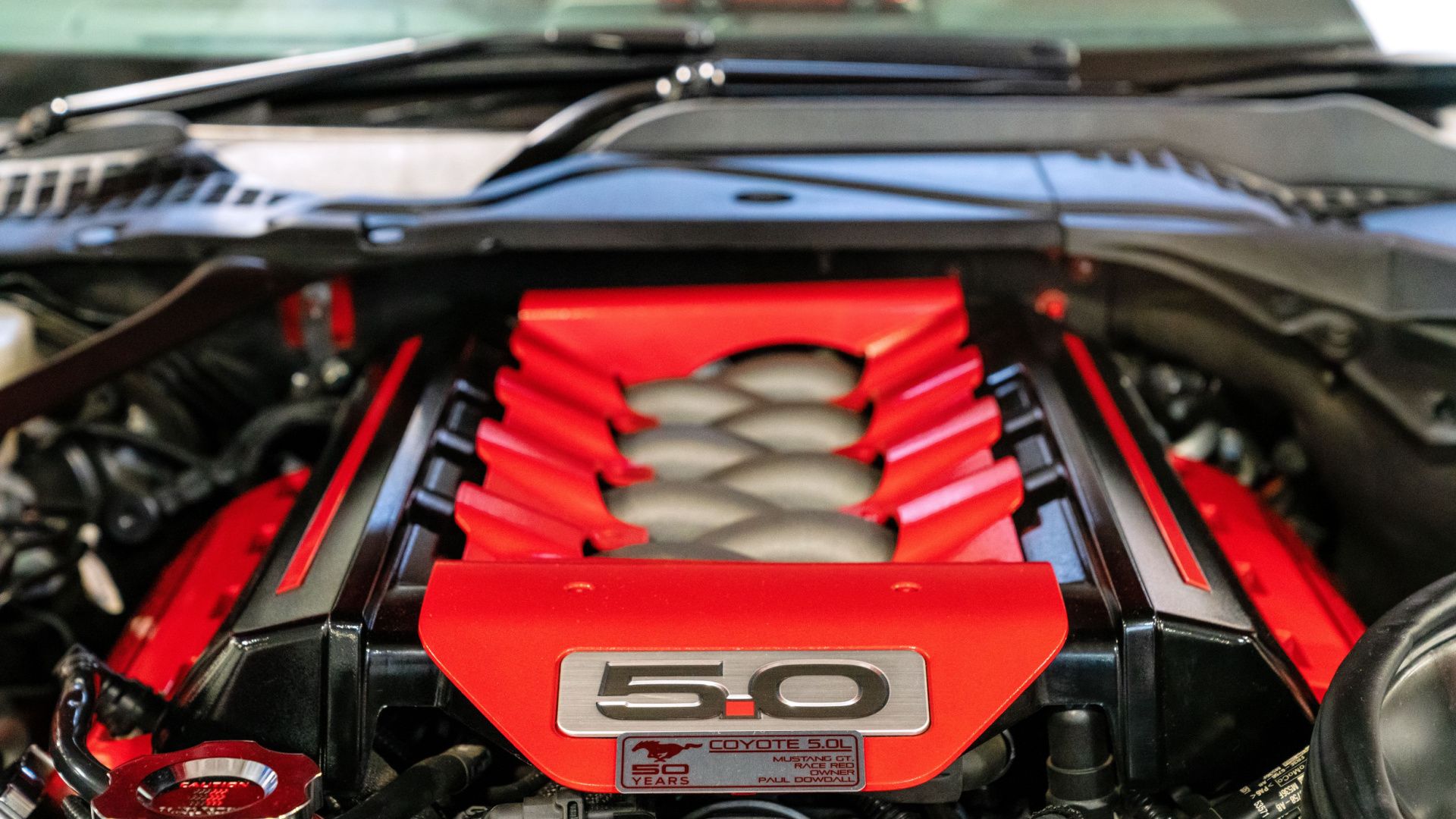
10 Ford Engines That Are Almost Too Reliable
From big burly V8s to fuel-efficient V6s, here are some of the most dependable engines developed by the Blue Oval, over the past century
3 Ford Coyote Gen-3
Power Limit: 850-900 Horsepower
The third-generation Ford Coyote V-8 came out for the 2017 Mustang S550 refresh, further proving why the Coyote is one of the most iconic American V-8 engines.
Techncial Highlights
- Higher compression ratio of 12:1
- 7,500 RPM redline
- Stronger block compared to early Coyote variants
The gen-three Coyote brought a few significant firsts, most notably, the introduction of direct injection, in addition to the traditional, port-injection. Another first is that the engine finally became a proper “5.0” thanks to a new crankshaft that increased displacement to 5,038 cc (307 cubic inches).
Ford Coyote Generation Three Specifications
|
Manufacturer |
Ford |
|
Production Years |
2017-2023 |
|
Configuration |
DOHC, 90-degree, V-8 |
|
Displacement |
5,038 cc/ 307 cui |
|
Power |
450-460 hp |
|
Torque |
420 lb-ft |
|
Fuel |
Gasoline |
|
Noteworthy Applications |
Ford Mustang GT, Ford Mustang Mach-1 |
(Source: Ford)
The Coyote also introduced revised pistons, revisions to the variable cam timing, and cylinder heads made from stronger, AS7GU alloy instead of Al319 in older Coyote generations. The third-generation Coyote also features a block with a semi-closed design, adding much-needed strength for high-horsepower applications. Its redline also went up from 7,000 to 7,500 RPM. As the dyno pulls show, the generation three Coyote makes slightly more power than advertised.
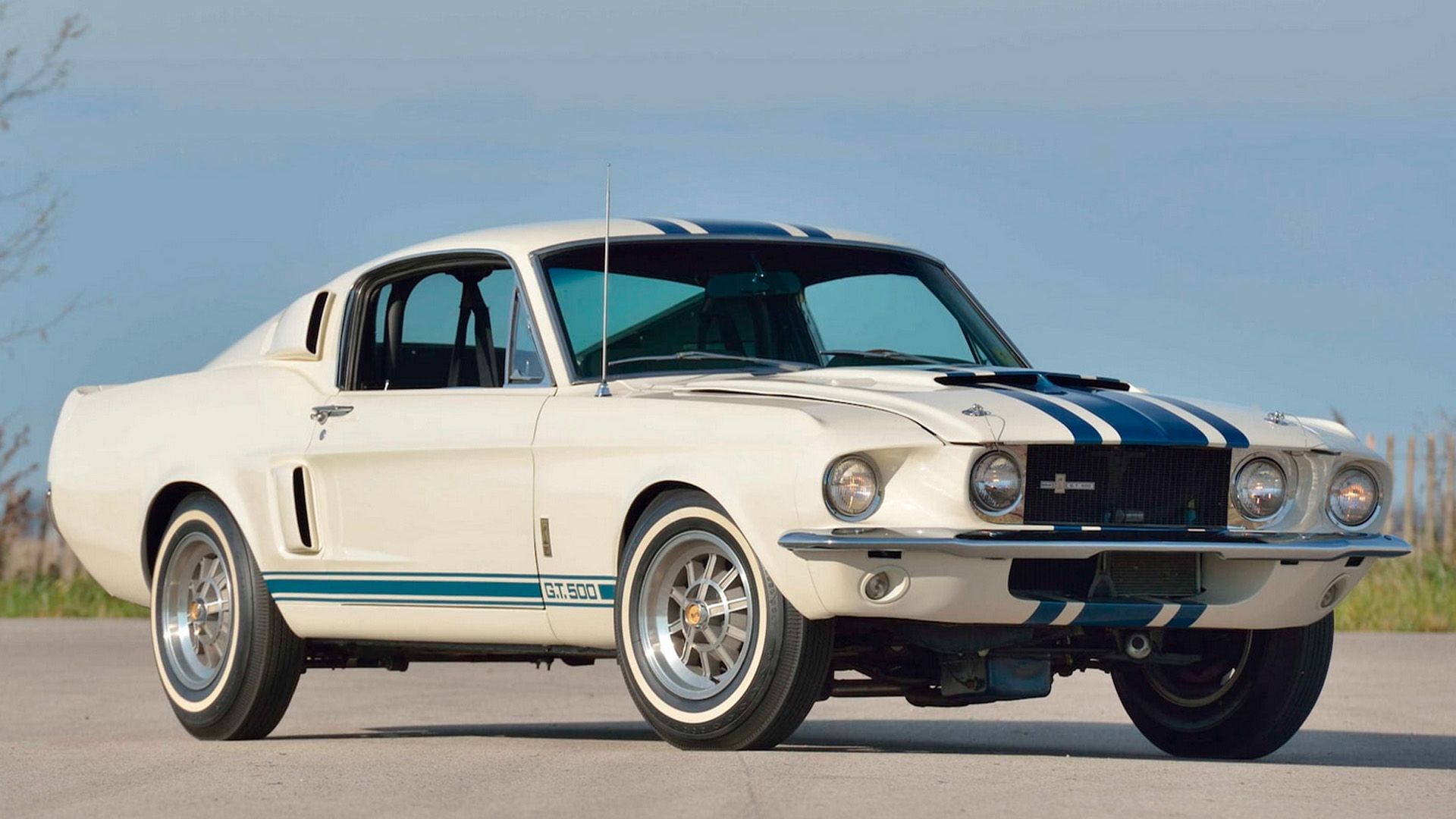
Fastest Ford Muscle Cars In Company History
With countless iconic nameplates from the Blue Oval, here are some of the fastest muscle cars that Ford has built over the decades
2 Ford Coyote Gen-4
Power Limit: 900 Horsepower
The fourth-generation Ford Coyote V-8 was only recently introduced with the emergence of the seventh-generation Mustang (S650). What was thought to be the first hybrid Mustang turned out to be a thorough revision of the familiar powertrain options but as the first 2024 Mustang GT dyno pull shows, with more power.
Techncial Highlights
- Dual throttle bodies
- 100 hp/ liter with a cross-plane crankshaft (Dark Horse)
- Improved cooling
The fourth-gen Coyote is almost identical to the third-generation. The real difference comes from software tweaks and a new dual-throttle intake manifold, resulting in 20 horsepower over the outgoing generation three Coyote.
Ford Coyote Generation Four Specifications
|
Manufacturer |
Ford |
|
Production Years |
2023-present |
|
Configuration |
DOHC, 90-degree, V-8 |
|
Displacement |
5,038 cc/ 307 cui |
|
Power |
480-500 hp |
|
Torque |
415-418 lb-ft |
|
Fuel |
Gasoline |
|
Noteworthy Applications |
Ford Mustang GT/ Ford Mustang Dark Horse |
(Source: Ford)
The Dark Horse variant of the S650 Mustang gains 20 extra horsepower thanks to further tuning and ported connecting rods from the GT500’s Predator V-8. With a target of 100 horsepower per liter, it’s safe to say this American V-8 has reached its peak, at least in normally aspirated form.
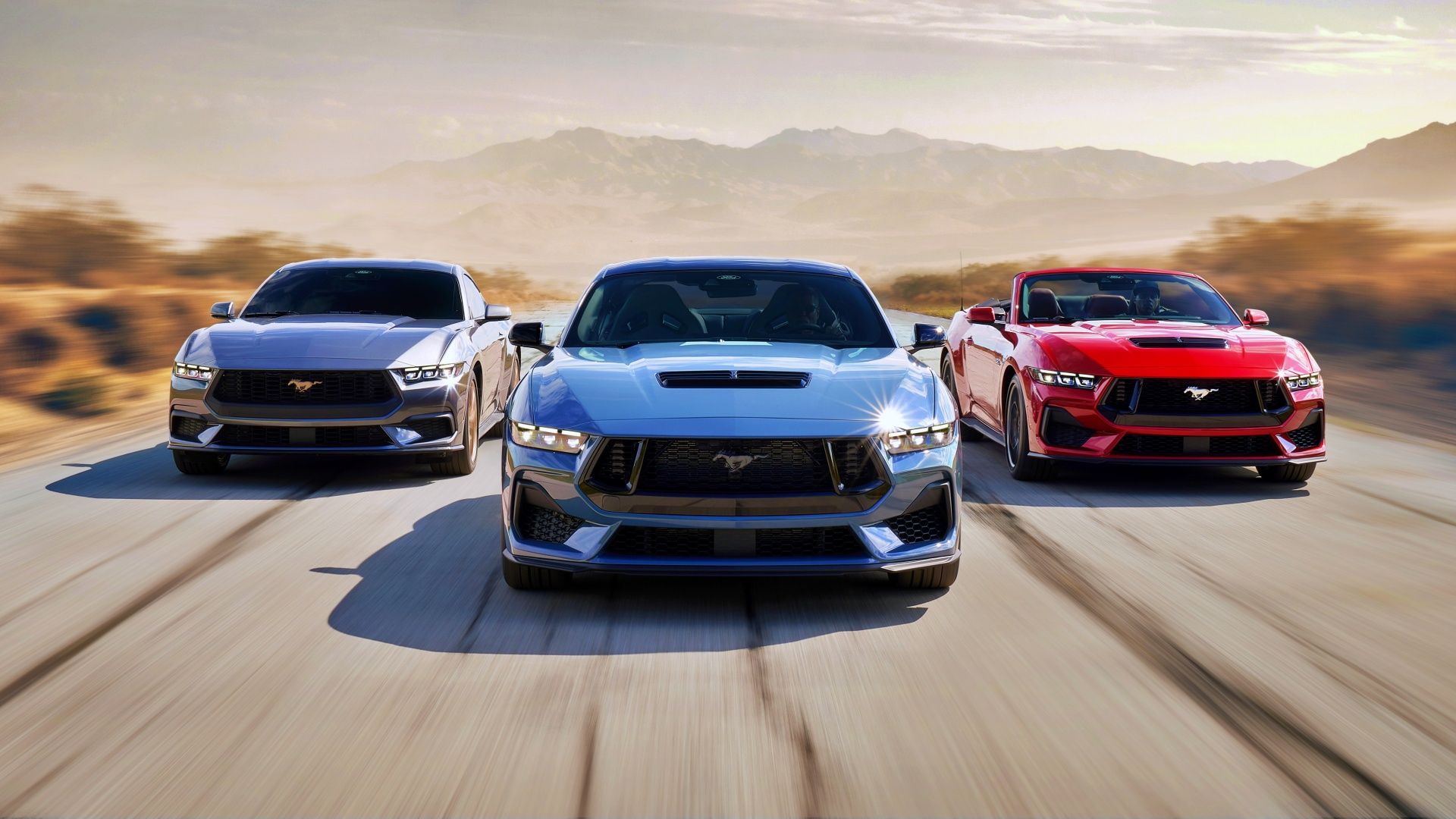
Ford Mustang GT Vs Dark Horse Vs EcoBoost All The Differences
Breaking down the 2024 Mustang lineup, we highlight the similarities and differences of popular variants of the S650 generation
1 Ford Coyote Road Runner
Power Limit: 1,050 Horsepower
In 2012, Ford resurrected one of its most iconic nameplates – the BOSS 302. This high-performance variant based on the phase-three S197 Mustang GT, featured a specially-tuned version of the generation one Coyote V-8, dubbed the Road Runner.
Techncial Highlights
- Capable of over 1,000 horsepower on stock internals
- 7,500 RPM redline
- The highest horsepower cap of all Coyote engines
- Completely revised cylinder heads
The compression ratio and displacement may be identical to the early Coyote engines, but that’s where most similarities end. This dyno pull shows exactly what these revisions have done for the BOSS 302’s Coyote-based Road Runner engine
Ford Coyote Road Runner Specifications
|
Manufacturer |
Ford |
|
Production Years |
2011-2013 |
|
Configuration |
DOHC, 90-degree, V-8 |
|
Displacement |
4,951 cc/ 302 cui |
|
Power |
444 hp |
|
Torque |
380 lb-ft |
|
Fuel |
Gasoline |
|
Noteworthy Applications |
Ford Mustang BOSS 302, BOSS 302 Laguna Seca |
(Source: Ford)
The cylinder heads are completely different, CNC ported (instead of raw casting), and with larger exhaust valves. Forged Mahle pistons also replace the Coyote’s cast ones, and a completely revised, short-ram intake replaces the Coyote’s long-runner intake.
The engine sacrifices a bit of mid-range punch but gains top-end power. The redline also went up from 7,000 to 7,500 RPM. While all Coyote blocks can handle big power, the BOSS 302 engine’s beefier internals raise the horsepower cap, compared to the first and second-generation Coyote V-8.


